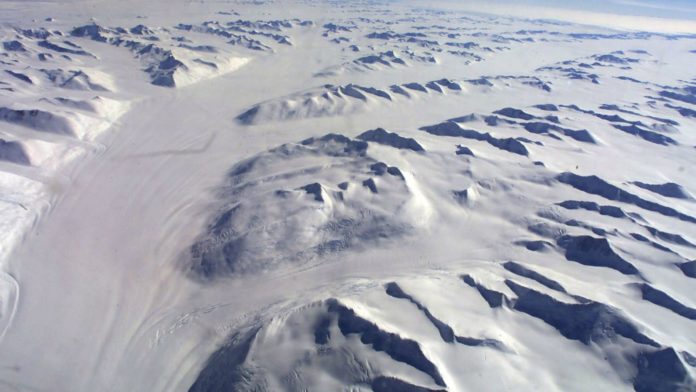
We all know that our fifth largest continent, Antarctica is the world’s coldest, highest, and driest continent and now it can attach another tough plume on its crown as the researchers at UK’s Edinburgh University discovered 91 volcanoes under the vast ice sheet in Antarctica, adding to the 47 others that had been found previously. The new research conducted by scientists from the University of Edinburgh’s School of Geosciences in the UK has revealed that West Antarctic Rift System is home to one of the largest volcanic ranges on Earth, with 138 volcanoes. One among them is as tall as Switzerland’s Eiger, which stands at almost 4,000 metres. The newly identified 91 volcanoes are buried beneath the two-and-a-half miles’ thick layers of ice in the West Antarctic Rift system, which range in height from 100 to 3,850 metres (325 to 12,600 feet).
New research released in the Geological Society Special Publications series identifies 91 new volcanoes, these active peaks are concentrated in a region known as the West Antarctic Rift System, a 3,500 km long area that stretches from Antarctica’s Ross Ice Shelf to the Antarctic Peninsula. Geologists say this huge region unseats east Africa’s volcanic ridge, currently rated the highest concentration of volcanoes in the world. However, the discovery of these volcanoes is crucial because the activity of the volcanoes can have some serious implications on the planet. If any of the newly-discovered volcanoes became active, the ice would obviously melt and that would have a dramatic effect on increasing sea levels.
“If one of these volcanoes were to erupt it could further destabilise west Antarctica’s ice sheets,” Robert Bingham, one of the study’s authors, told the Guardian. “Anything that causes the melting of ice, which an eruption certainly would, is likely to speed up the flow of ice into the sea,” he said. “The big question is: how active are these volcanoes? That is something we need to determine as quickly as possible,” he added.
These newly identified volcanoes were discovered using a digital elevation model called Bedmap 2 DEM. Without Bedmap 2, it was impossible to identify signs of volcanic systems under Antarctica’s ice-laden terrain. Geologists used Bedmap 2 to locate individual conical edifices into the ice and to survey the lower side of the ice sheet for hidden cone-shaped structures or peaks of basalt rock.
That survey created a surface elevation model of cones using radar imaging, which was then examined with aerial and satellite imagery to identify volcano-like formations. Actually, they analysed the shape of the land beneath the ice in West Antarctica using measurements from ice-penetrating radar and compared the results with satellite and database records, as well as geological information from aerial surveys. The results showed as many as 178 cone-shaped formations beneath the ice, of which 138 determined to be volcanoes and 91 were outlined as previously undiscovered volcanic structures. The study was proposed by a third-year undergraduate student, Maximillian Van Wyk De Vries, Robert G Bingham (one of the paper’s authors) and Andrew S. Hein, suggests the density of these volcanoes is approximately one volcano per 4,800 square miles, which makes the West Antarctic Rift System one of the world’s largest volcanic regions.
Scientists hope the results from the study will help them to improve understanding of how volcanoes can influence long-term fluctuations in the ice sheet and how the continent has changed in past climates. However, the team is currently unable to determine whether any of the ice-covered volcanoes are active, but they plan to use this data to determine that in future studies.
Max Van Wyk de Vries, a third-year undergraduate student at the University of Edinburgh’s School of GeoSciences, said, “Antarctica remains among the least studied areas of the globe, and as a young scientist I was excited to learn about something new and not well understood. After examining existing data on West Antarctica, I began discovering traces of volcanism. Naturally, I looked into it further, which led to this discovery of almost 100 volcanoes under the ice sheet.”
Scientists are also predicting that the West Antarctica would be the most affected by the volcanoes as the significant warming in the region caused by climate change has already begun. This process would obviously melt the ice sheets and that would have a dramatic effect on increasing sea levels. If they are melted significantly, this could release pressure on the volcanoes that lie beneath the vast ice sheet and lead to eruptions. Further study should take a closer look to determine whether those volcanoes are active or not.
Dr Robert Bingham, of the University of Edinburgh’s School of GeoSciences, said, “It is fascinating to uncover an extensive range of volcanoes in this relatively unexplored continent. A better understanding of volcanic activity could shed light on their impact on Antarctica’s ice in the past, present and future, and on other rift systems around the world,” reports The Independent.
























